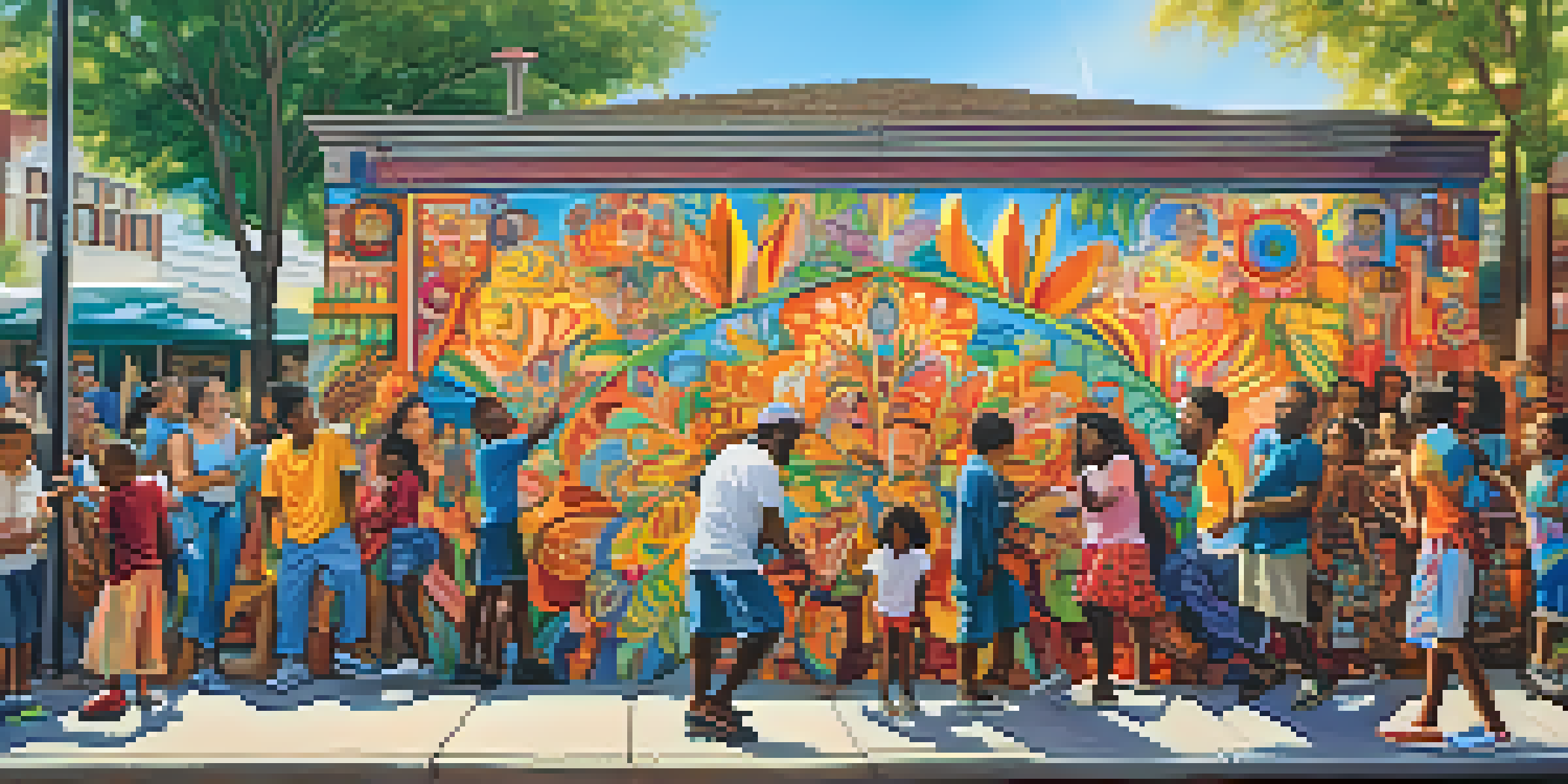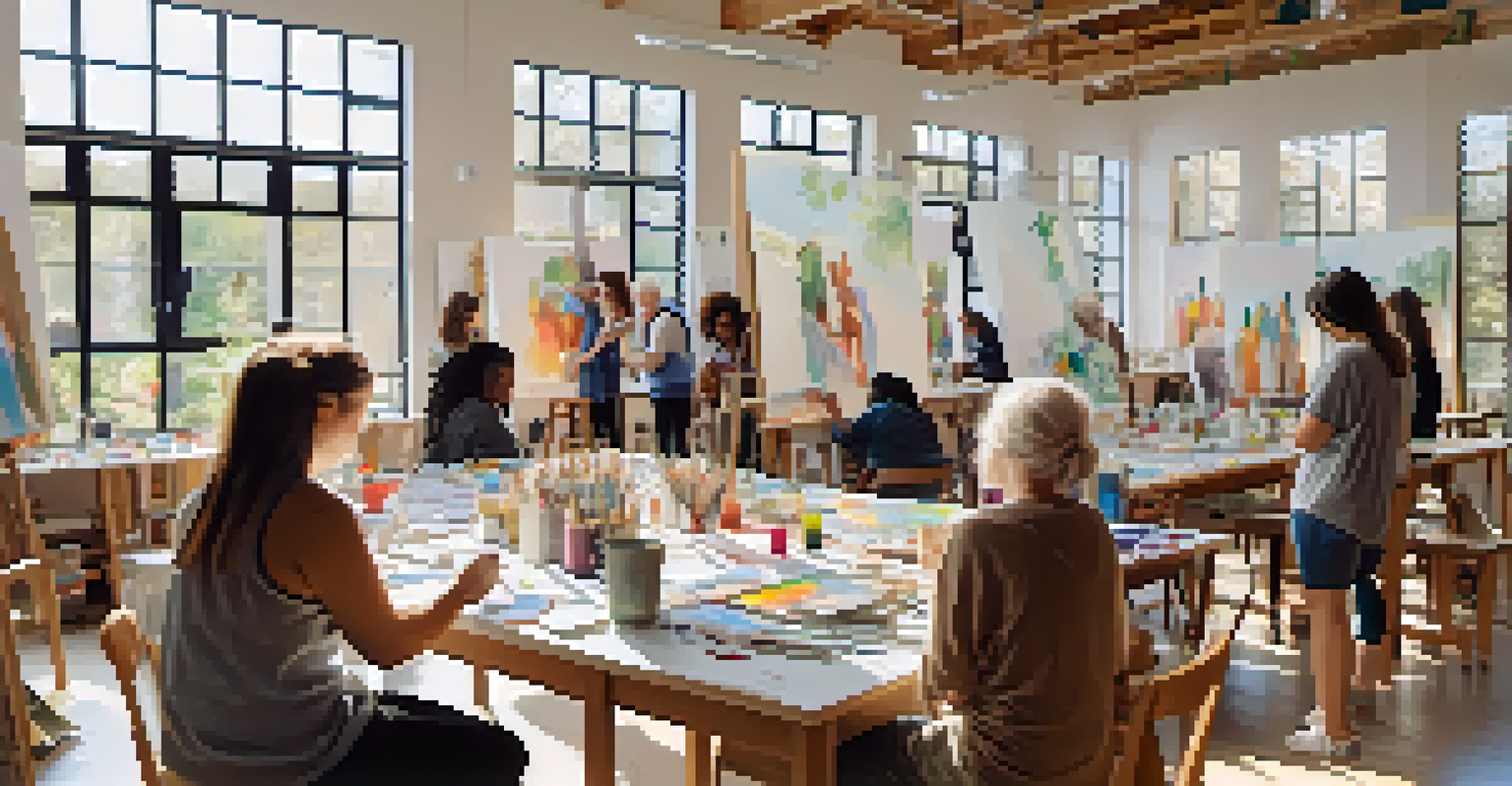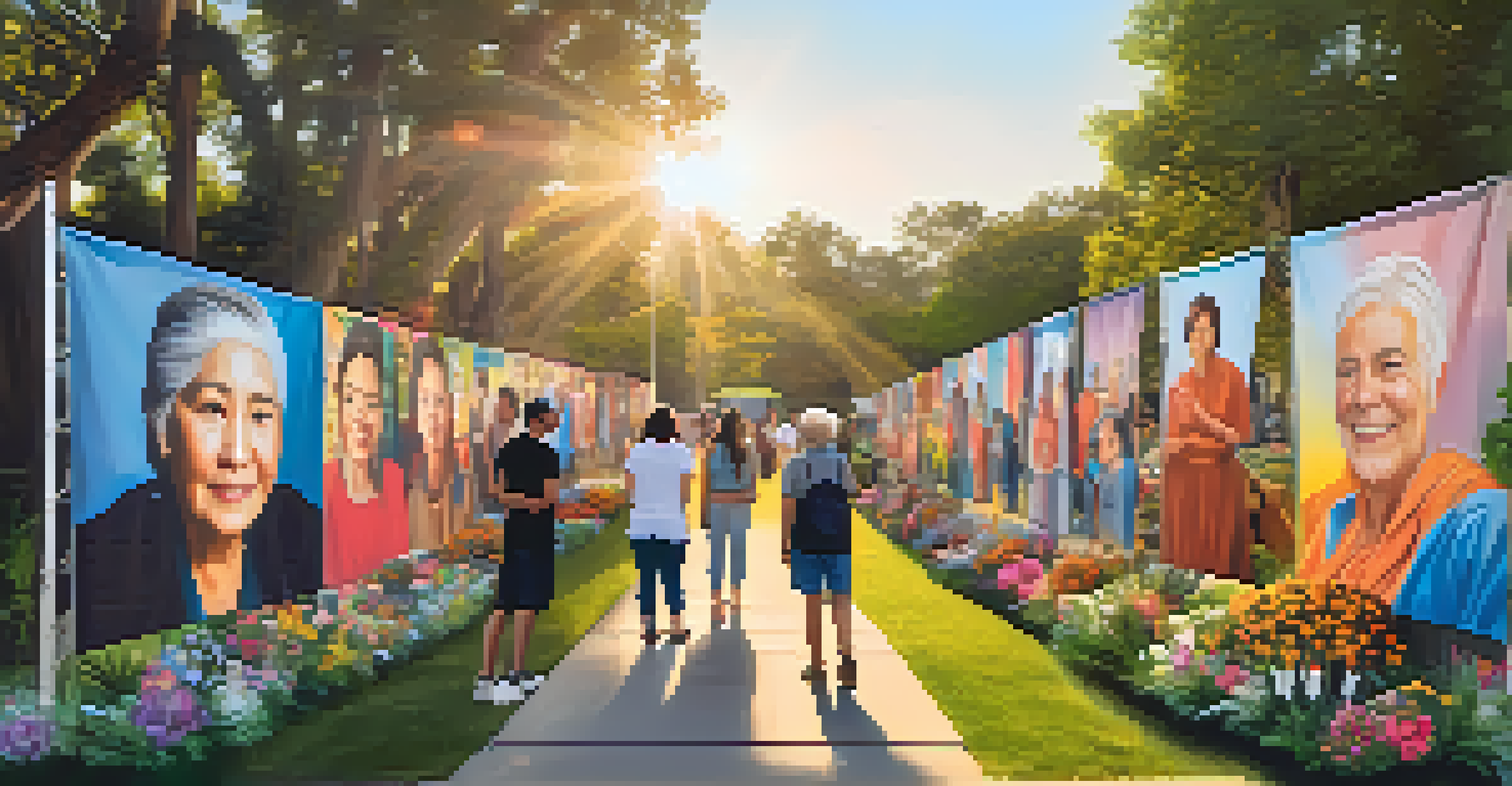Crafting Community Resilience Through Collaborative Art

Understanding Community Resilience and Its Importance
Community resilience refers to the ability of a group to withstand and recover from challenges, such as natural disasters or social upheaval. It’s about more than just bouncing back; it’s about thriving despite adversity. In this context, resilience is essential for fostering a sense of belonging and safety among community members.
Art is a collaboration between God and the artist, and the less the artist does the better.
When communities face disruptions, those with strong resilience are better equipped to support each other and rebuild. This leads to improved mental health, social cohesion, and a shared sense of purpose. In essence, resilient communities are like robust ecosystems that adapt and flourish together.
Art can play a vital role in enhancing community resilience by bringing people together to express their experiences and share their stories. Through collaborative art projects, individuals can create a sense of unity, fostering connections that serve as a foundation for resilience.
The Role of Collaborative Art in Community Building
Collaborative art projects invite community members to participate in creating something larger than themselves. This process not only nurtures creativity but also encourages collaboration and teamwork. As people come together to work on a common goal, barriers are broken down, and relationships are built.

For example, a mural project can transform a neglected space into a vibrant focal point for the community, while also providing a platform for diverse voices. These projects can help participants feel valued and heard, reinforcing their sense of belonging within the community.
Community Resilience Defined
Community resilience is the ability of a group to thrive despite challenges, fostering belonging and safety among members.
Moreover, the shared experience of creating art can spark meaningful conversations about community issues and aspirations. When people collaborate on art, they often explore themes that matter to them, leading to deeper understanding and empathy among participants.
Art as a Tool for Healing and Expression
Art has long been recognized as a powerful medium for healing and self-expression. For individuals who have experienced trauma or hardship, creating art can serve as a therapeutic outlet. This process allows them to process their emotions and experiences in a constructive way.
Creativity takes courage.
In community settings, art can help shine a light on shared struggles and victories. By expressing collective feelings through art, communities can validate their experiences and foster healing. This is particularly important in areas affected by violence or natural disasters.
Through workshops or community art days, participants can explore their emotions and connect with others who share similar stories. This shared journey not only promotes healing but also strengthens the ties within the community, reinforcing resilience.
Fostering Inclusivity Through Artistic Collaboration
Collaborative art projects can create a platform for inclusivity, allowing diverse voices to contribute to the narrative. This is crucial in communities where marginalized groups may feel overlooked or unheard. By actively involving these groups in the artistic process, communities can promote equity and representation.
For instance, participatory art initiatives that include individuals from various backgrounds can highlight unique perspectives and experiences. This diversity enriches the project and fosters a sense of ownership among participants, as they contribute their unique insights.
Art Enhances Community Bonds
Collaborative art projects promote teamwork and inclusivity, helping community members to connect and express their shared experiences.
As a result, these projects can help bridge gaps and create a more cohesive community. When everyone has a chance to share their story through art, it cultivates understanding and appreciation, ultimately enhancing community resilience.
Examples of Successful Collaborative Art Initiatives
There are numerous examples of successful collaborative art initiatives that have made a significant impact on communities. One notable example is the 'Inside Out Project,' which invites people around the world to share their stories through large-scale portraits displayed in public spaces. This project has empowered communities to express their identities and foster dialogue.
Another inspiring initiative is the 'Community Mural Project,' where local artists work alongside residents to create murals that reflect their shared history and aspirations. These murals not only beautify neighborhoods but also serve as a reminder of the strength and resilience of the community.
Such projects demonstrate how art can be a catalyst for change and connection. By showcasing the power of collaborative creativity, these initiatives inspire other communities to harness the potential of art in building resilience.
The Impact of Technology on Collaborative Art
In today's digital age, technology plays a significant role in enhancing collaborative art initiatives. Online platforms allow artists and community members to connect, share ideas, and collaborate on projects, regardless of geographical barriers. This accessibility has opened up new avenues for creativity and participation.
Social media, for example, can amplify the reach of community art projects, attracting participants and supporters beyond the local area. By documenting the artistic process online, communities can showcase their resilience and creativity to a wider audience, inspiring others to engage in similar efforts.
Technology's Role in Art Initiatives
Digital tools expand collaborative art efforts, enabling broader participation while maintaining the importance of in-person engagement.
However, it's essential to balance digital engagement with in-person collaboration. While technology can enhance connection, the heart of collaborative art lies in the shared experience created when people come together to create. Finding that balance can maximize the impact of these initiatives.
Looking Ahead: The Future of Collaborative Art in Communities
As communities continue to navigate challenges, the role of collaborative art in fostering resilience is likely to grow. With increasing recognition of the importance of mental health and community well-being, more organizations are likely to invest in art initiatives that bring people together. This trend highlights a shift towards holistic approaches to community development.
Moreover, as diverse communities become more interconnected, collaborative art can become a powerful tool for promoting understanding and unity. By embracing different perspectives and experiences, communities can create art that reflects their collective identity and aspirations.

Ultimately, the future of collaborative art in communities is bright. By harnessing the power of creativity and collaboration, communities can build resilience, foster inclusivity, and create lasting connections that enrich the lives of all members.